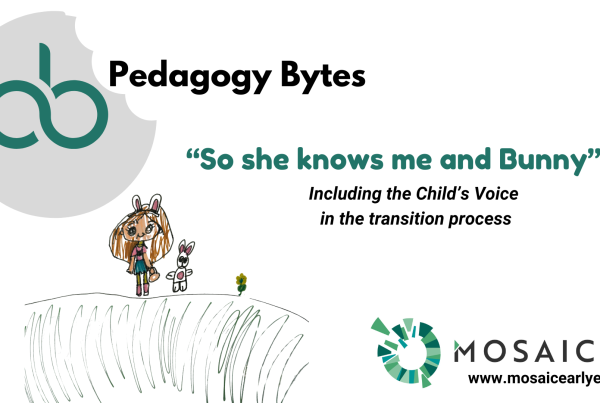As an Educator, the moment you realise that managing young children’s behaviour has everything to do with how you set up the environment, react to children’s actions and behaviours, and how you connect with children; the better equipped you will be to deal with challenge when it arises.
This Knowledge Byte highlights areas of practice where you can be mindful of ways to prevent children’s unwanted behaviour, the immediate actions you should take if it arises, strategies for acknowledging children’s feelings and what to do if children are not agreeing on a solution.
So what can you do in everyday practice?
1. Set children up to succeed. Provide activities and materials that engage and stretch children’s thinking but avoid frustration or staying in the same place for too long.
2. Make routines predictable. Make sure to prepare children when anything out of the ordinary is planned. Anxiety is a major reason for unwanted behaviour in young children, it doesn’t always present itself as worry.
3. Do not overstimulate. Children process information slower than adults, and too much stimulation can result in a child being overwhelmed. Make adjustments to the environment gradually and slowly introduce change.
4. Use positive corrections instead of negative ones. /We walk inside, but when we get outside you can run… or Hitting hurts. When you are angry, you need to use your words and keep your hands on your body. When you do have to correct a child get down to their level and do it gently and without shame.
5. Notice good behaviour and praise it authentically. All children are good; their behaviour may be challenging, but the child just wants connection, and it’s our job to find a way to make that connection. ‘Catch them being good’ and focus on that.
6. Selectively ignore bad behaviours. Once you understand a child’s motivations for behaviours you can decide if you can ignore it or not. Of course how it affects other children plays a large role in whether you can ignore it or not.
7. Be a role model and call yourself out when you do something that breaks your room rules and expectations. Every moment in your classroom is a teachable moment.
8. Teach about emotions to foster empathy. When children can recognize and respond to the emotions of others they can work more cooperatively and take responsibility for their actions. Use circle time activities to explore emotions.
9. PLAY with children. Get down on the ground and pretend to be a lion, drink 50 cups of pretend coffee and make snakes with playdough. That is where your real authority will come from, not by shouting, or making students fear you.
Immediate Actions when Dealing with Unwanted Behaviour:
- Stop hurtful actions and words immediately; gently restrain children if necessary
- Place yourself between children, on their level
- Use calm body language to soothe children and convey your neutrality: comforting gestures, eye contact, soft voice, supportive facial expression
- Be ‘fully present’ for children.
Strategies for Acknowledging Feelings
– State feelings concretely: (“you are feeling very upset, I can see you are really, really angry”). Do not ask questions about feelings
– Reframe children’s hurtful words as you acknowledge feelings “You are very angry with Conor. It’s not OK to call people names when you are upset. I know you are very angry”).
– If necessary state a limit as part of your acknowledging statement (“Molly, stop hitting. You are feeling very angry because Lily has the doll and you want it. It’s not OK to hit. I know you really want the doll”).
– Let children know you need to hold any objects in dispute until an agreement is reached. (“I need to hold this while we talk”).
– Watch for signs that children have fully expressed their feelings (body relaxes, crying stops, voice tones become lower and softer, children’s action or words change), then move on with problem solving.
– If necessary, acknowledge feelings throughout problem solving discussion. If a child refuses every solution offered with a loud ‘no’, this is a clear indicator he or she is still upset and feelings need to be acknowledged again.
What to do if Children are not Agreeing on a Solution
1. Ask children involved in the dispute for solutions: “What can you do to solve this problem?”
2. Next, ask children nearby for ideas: “We have a problem here (give brief explanation), do you have ideas for what they could do to solve it?”
3. Tell the children that you have an idea, and ask if they want to hear it: “I have an idea for solving this. Do you want to hear my idea?”
4. Give limited choices: “It’s almost time to clean up. You need to choose one of the ideas we have talked about, or you need to choose something else to do”.
5. Tell the children you will need to decide the outcome: “If you don’t choose, I will need to choose for you”.




